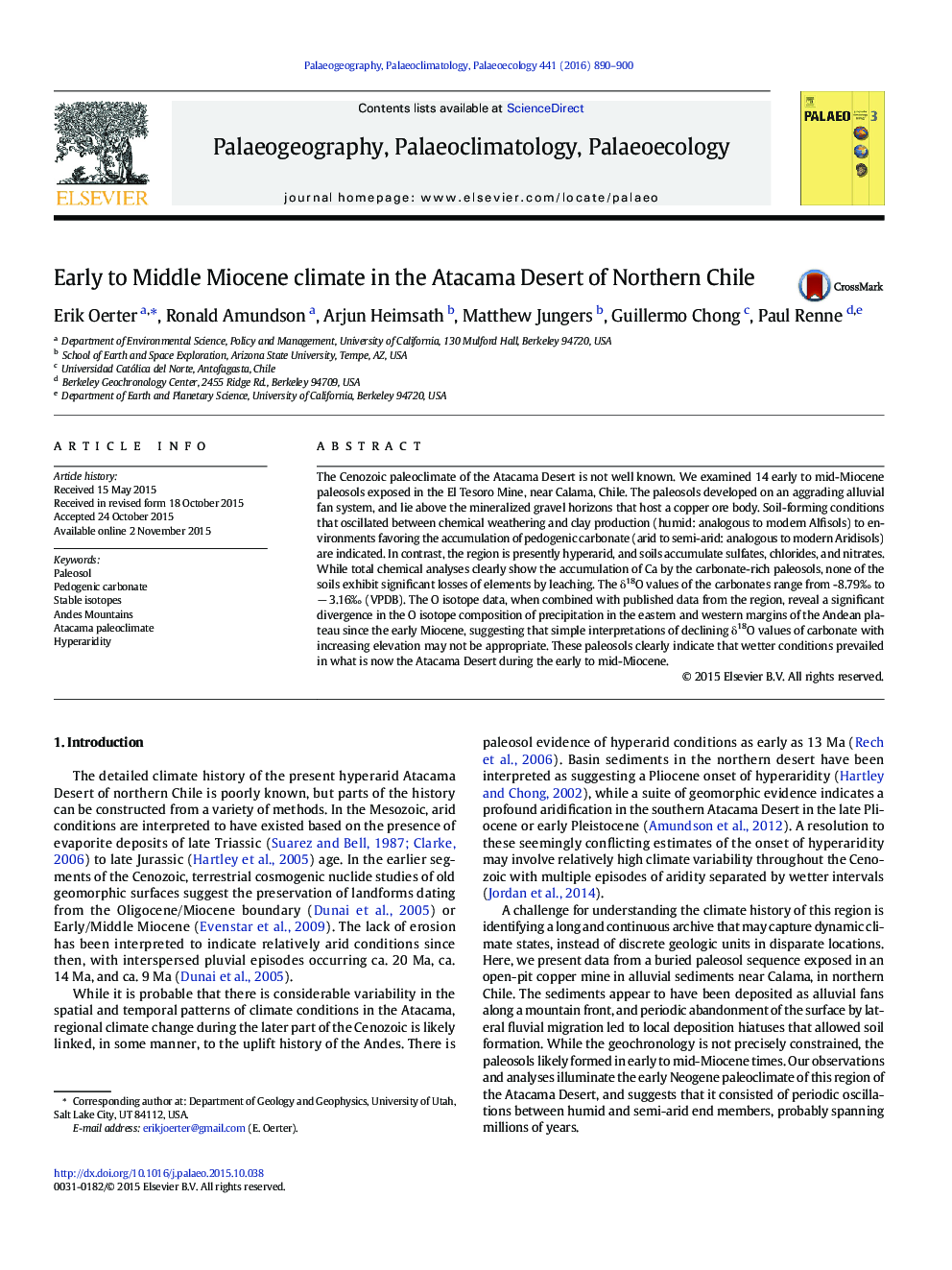| Article ID | Journal | Published Year | Pages | File Type |
|---|---|---|---|---|
| 6349368 | Palaeogeography, Palaeoclimatology, Palaeoecology | 2016 | 11 Pages |
Abstract
The Cenozoic paleoclimate of the Atacama Desert is not well known. We examined 14 early to mid-Miocene paleosols exposed in the El Tesoro Mine, near Calama, Chile. The paleosols developed on an aggrading alluvial fan system, and lie above the mineralized gravel horizons that host a copper ore body. Soil-forming conditions that oscillated between chemical weathering and clay production (humid: analogous to modern Alfisols) to environments favoring the accumulation of pedogenic carbonate (arid to semi-arid: analogous to modern Aridisols) are indicated. In contrast, the region is presently hyperarid, and soils accumulate sulfates, chlorides, and nitrates. While total chemical analyses clearly show the accumulation of Ca by the carbonate-rich paleosols, none of the soils exhibit significant losses of elements by leaching. The δ18O values of the carbonates range from -8.79â° to â 3.16â° (VPDB). The O isotope data, when combined with published data from the region, reveal a significant divergence in the O isotope composition of precipitation in the eastern and western margins of the Andean plateau since the early Miocene, suggesting that simple interpretations of declining δ18O values of carbonate with increasing elevation may not be appropriate. These paleosols clearly indicate that wetter conditions prevailed in what is now the Atacama Desert during the early to mid-Miocene.
Related Topics
Physical Sciences and Engineering
Earth and Planetary Sciences
Earth-Surface Processes
Authors
Erik Oerter, Ronald Amundson, Arjun Heimsath, Matthew Jungers, Guillermo Chong, Paul Renne,
